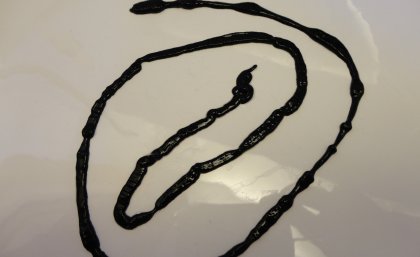
A family of potent protein neurotoxins has been discovered in bootlace worms.
Found in the northern hemisphere and reaching up to 55 metres in length, bootlace worms were investigated as part of a neglected group of marine worms with poorly understood chemistry.
UQ researcher Dr Johan Rosengren said animal toxins had a wide range of commercial applications.
“Proteins from marine snails, snakes, spiders, and scorpion venoms have been used as drugs, pharmacological tools, and within biotechnology and agriculture,” Dr Rosengren said.
“The most potent of the new toxins identified produces effects in invertebrates similar to tetrodotoxin, a well-known toxin sourced from puffer fish which causes paralysis.
“This makes it a potentially ideal insecticidal toxin.”
The toxin, known as nemertide α-1, was identified in the large amounts of thick mucus the worm produced when provoked.
 “We isolated the most abundant toxin protein from the mucus and found that its injection causes paralysis and death in green crabs and juvenile cockroaches,” Dr Rosengren said.
“We isolated the most abundant toxin protein from the mucus and found that its injection causes paralysis and death in green crabs and juvenile cockroaches,” Dr Rosengren said.
“When compared to similar protein toxins from spiders, nemertide α-1 is at least three times more potent for a comparable dose.”
“We also showed that the isolated toxin prevents the inactivation of invertebrate sodium channels in three distinct insect species: the German cockroach, the common fruit fly and the varroa mite.”
“Lots of work remains in order to fully characterise these peptides, but we hope to find out if we can use the defense molecules from the bootlace worms to control insect pests that destroy crops and spread disease.”
The study is published in Scientific Reports.
Media: Johan Rosengren, j.rosengren@uq.edu.au, +61 7 3365 1403: Faculty of Medicine, med.media@uq.edu.au, +61 7 3365 5133.







-Megan-Pope-UQ_620.jpg?itok=HheutY-P)


